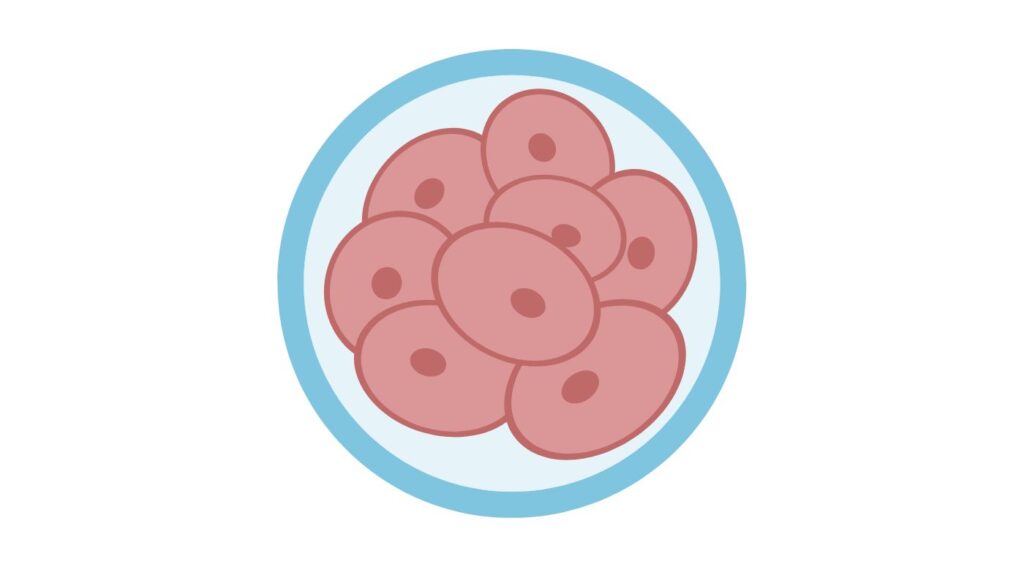
Laser Assisted Hatching for Older Women: Process, Benefits, and Success Rates
What is Laser Assisted Hatching?
The laboratory technique called Laser Assisted Hatching (LAH) improves In Vitro Fertilization (IVF) embryo implantation chances through advanced laboratory procedures. A specific laser cuts a precise hole into the zona pellucida which protects the embryo. When the layer becomes weaker after laser application the embryo hatches with greater ease to effectively embed itself in the uterus which leads to higher pregnancy chances.
Overview of Laser Assisted Hatching
This assisted IVF procedure gives the best results to patients who previously experienced multiple failed IVF cycles or have embryos with poor quality characteristics along with a thick zona pellucida. Medical staff utilize laser technology within a microscope to create an opening in the zona pellucida without any harm to the embryo.
Importance of the Procedure for Older Women Undergoing IVF
The fertility of women who are past 35 becomes impaired mainly because of zona pellucida thickening and deteriorating egg quality coupled with hormonal variations. Laser Assisted Hatching IVF serves to resolve these difficulties through better embryo implantation and it boosts success rates in pregnancy..
The Role of the Zona Pellucida in Fertility
Understanding the Zona Pellucida’s Function
The embryo gets protection through the glycoprotein membrane known as zona pellucida. During embryo development this glycoprotein membrane acts as a protector that regulates sperm interactions while safeguarding the developing embryo.
How the Zona Pellucida Affects Embryo Implantation
The embryo requires hatching from its zona pellucida membrane for implantation to become successful. A zona pellucida which becomes too thick or hard makes embryo hatching more difficult thus decreasing the opportunity for pregnancy. The implantation success improves through Laser Assisted Hatching since it helps patients break through infertility barriers.
How Laser Assisted Hatching Works: Step-by-Step
- Medical staff analyzes the embryo to see if Laser Assisted Hatching is essential.
- Medical scientists use a precise laser beam to make a small entry point or thin soft section of the zona pellucida.
- The medical staff positions the treated embryo back in its growing environment to proceed development.
- The transfer of the embryo into the uterus takes place when the embryo achieves its required stage of development.
Timing and Techniques Used During IVF
Services usually take place during day 3 or day 5 embryo evaluation. The most common techniques include:
- Research studies show that Partial Zona Dissection requires doctors to create a small hole in the zona pellucida.
- The surface layer of the embryo is reduced by laser to make natural hatching possible.
The Impact of Laser Assisted Hatching on IVF Success
Why Laser Assisted Hatching is Recommended in IVF Cycles
- Laser Assisted Hatching increases pregnancy chances by assisting embryo hatching.
- Laser Assisted Hatching benefits mature women who have a thickened outer embryonic membrane
- The technique makes more frozen embryo transfers successful
How It Enhances Embryo Implantation
The embryo hatches more effectively from the treatment which raises the success rate of pregnancies through Laser Assisted Hatching IVF.
Laser Assisted Hatching for Older Women: Why It Makes a Difference
The Benefits of Laser Assisted Hatching for Women Over 35
- The technique increases implantation success for women whose embryos have low quality status
- The technique gives improved pregnancy chances to people who did not conceive after IVF treatment.
- Helps overcome age-related infertility challenges
How This Technique Addresses Challenges Faced by Older Women in Fertility Treatments
This Procedure Helps Seniors Deal Better with Infertility Issues During Fertility Treatment.When women age their eggs produce thicker zona pellucida which prevents normal hatching. The laser hatching method lets more older women reach pregnancy through IVF treatments.
Success Rates of Laser Assisted Hatching
Factors That Influence Success Rates
- Age of the woman
- Embryo quality
- Fertility history and previous IVF failures
Data on Success Rates for Older Women Using Laser Assisted Hatching
Research finds that women older than 35 achieve better embryo implantation results and achieve higher pregnancy rates through Laser Assisted Hatching IVF.
Potential Benefits Beyond IVF: Why Choose Laser Assisted Hatching
Additional Advantages of Laser Assisted Hatching for Older Women
- Increases live birth rates
- Smaller rates of pregnancy loss occur because the treatment strengthens embryo attachment inside the uterine cavity
- Ice embryos transfer during frozen cycle procedures gets better results.
How It Improves Pregnancy Chances and Reduces Miscarriage Risks
Through exact implantation support Laser Assisted Hatching helps decrease the number of pregnancies that end early in order to create better fertility results.
Risks and Considerations in Laser Assisted Hatching
Possible Complications or Side Effects
- The procedure can harm embryos whether the provider does it improperly.
- Risk of multiple pregnancies
- The embryo may not successfully attach to the uterus even though the treatment happens
How to Evaluate If Laser Assisted Hatching is the Right Choice
Fertility specialists need to examine age condition and test results to see if Laser Assisted Hatching IVF will benefit the patient.
Conclusion
Older women who have difficulty with implantation during IVF should consider Laser Assisted Hatching as a helpful procedure. The technique delivers better embryo hatching results which means patients have higher chances of successful pregnancy.
FAQs
1. What is the zona pellucida?
Embryos depend on the zona pellucida outer protection to survive from conception through early development.
2. Which patients are most suited for Laser Assisted Hatching?
Women past their 35th birthday and patients who have thick zona pellucida need this Hatching service if they failed IVF before and want to use frozen embryos.
3. Does Laser Assisted Hatching boost the chances for successfully achieving pregnancy?
Researchers now show that Laser Assisted Hatching IVF supports better embryo attachment especially in patients over 35.
4. Is Laser Assisted Hatching safe?
An expert embryologist performs the procedure with small known risks.
5. What makes Laser Assisted Hatching different from other hatching processes?
The laser hatching process provides better results while being safer and less hurtful than using tools or chemicals to open the egg.